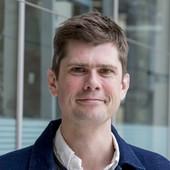Human Folly and the Nature of Evil: Francisco Goya at the Metropolitan Museum of Art
Perhaps what is most startling about the etchings of Francisco Goya, presently on view at the Metropolitan Museum of Art, is the artist’s intensity of focus, his obsession with understanding the nature of human evil. Goya was a child of the Enlightenment, and he knew what it was to see humanity as the pinnacle of creation, the paragon of animals, the embodiment of reason, “in form and understanding how like a god?” as Hamlet would say. Yet this same creature, the light of reason in the world, was capable of the most barbaric cruelty. In one series after another Goya’s etchings attempt to grasp the universality of evil, to see it as an essentially human problem to be understood in terms of our capacity for moral choice. Evil is universally human, for Goya – a propensity in human beings that is at once basic and inextinguishable.
Among the exhibition’s opening prints are works from a series based on paintings by the Spanish artist Diego Velázquez, including “A Court Jester, El Primo” (1778) – and like his venerated predecessor, Goya emphasizes his subject’s interiority; even going beyond Velázquez in his accentuation of El Primo’s penetrating, and rather defiant gaze.
The “Garroted Man” (ca 1775-78) is an important piece in that it indicates the humanitarian concerns that would return with full force in the Disasters of War series, created between 1810 and 1820. Goya has removed from the image anything that could draw the viewer’s attention away from the man who has just been strangulated – he sits with his legs outstretched, his eyes swollen and shut, and his back against a wooden post, outfitted with a lever to choke the life out of him.
Francisco Goya’s Los Caprichos, created between 1793 and 1798, is one of the most astonishing achievements in the history of printmaking. The series of eighty aquatint etchings, published in 1799, may be said to constitute and convey a pessimistic appraisal of the human condition. There is little if any relief from its frank, uninhibited exploration and depiction of human folly, error, and superstition. If there is any hope of salvation, it lies in the unity of reason with the infinite fecundity of human imagination.
The Caprichos can be fiercely critical of Bourbon Spain, underscoring the pervasive hypocrisy, corruption and ignorance; made only worse by the “Lamentable abuse of early education,” as he writes in the caption to plate three, entitled “Here comes the bogeyman.” Goya included ironic, satirical, or ambiguous captions to accompany each of the eighty prints – generally reflecting his disillusionment and increasing bitterness towards a world he saw slipping into chaos and confusion.
In plate twelve, “Out hunting for teeth,” we find Goya’s first reference to witchcraft, a theme which would recur and develop as the series progressed. A woman is attempting to pluck the teeth from the dangling corpse of a hanged man, as these were popularly believed to possess magical properties: “without this ingredient there’s not much you can do,” as Goya writes with typically biting irony. Once again, the poverty of education allows the common people, and women in particular, to continue to “believe such nonsense.”
Goya explicitly and vehemently rebukes the Spanish Inquisition in the twenty-third plate’s depiction of an auto-da-fé, beginning and ending his caption with the same two words, Mal hecho, (“For shame!”). A condemned woman sits atop a raised platform, her head bowed in abject humiliation: during such ceremonies of public penance the accused would wear a capirote, a pointed hat of conical form indicating their supposed crimes. This ritual was generally followed by the execution of the heretic, by public burning or some other suitably horrific method.
Plate forty-three, “The sleep of reason produces monsters,” is among the most recognizable images of the entire series: a figure, presumably the artist himself, cradles his head, face down, within his folded arms, in an attitude of profound anguish and desolation. Surrounding him are a frightful bevy of nocturnal creatures, owls, bats, and felines. Goya himself was no stranger to severe depression, undoubtedly exacerbated by repeated bouts of severe illness which left him essentially deaf at the age of 46.
Witches and witchcraft, sorcery and supernatural creatures are recurring themes and Goya does not flinch from examining the darkest corners of the human mind, the nightmarish, and what we might call metaphysical evil. Plate forty-five, “There is plenty to suck” reveals a basketful of dead infants whose life has been “sucked” out of them by two witches or vampires, who are now taking a pinch of snuff after their ghastly meal. This is an especially striking example of Goya’s exploration of what we may call the horror of evil.
Plate sixty-four, “Bon Voyage” offers perhaps the darkest vision of the entire series, a group of witches and demons swoop through the nighttime fog carried on the back of a loathsome creature with human legs, batlike wings, and one of Goya’s most terrifying of faces – turning the scene into something at once spellbinding, dreadful and appalling to behold. The series concludes with the return of dawn in Plate eighty, “It is time” – as we see four men in ecclesiastical robes stretch and yawn; but their deformed and distorted features remind us that, for Goya, it is the corrupted and fraudulent clergy who are the true witches and hobgoblins.
Evil is something real and substantial for Goya. He rejects the long-held belief that evil is nothing in itself, mere privation, an absence of being. Saint Augustine for example would argue that evil lacked any positive reality of its own. As he states in Book XI, Chapter nine of City of God: “[Evil] is not a positive substance: the loss of good has been given the name ‘evil’.” Augustine’s notion of evil as a negation or mere lack of being predominated well into the modern era, and indeed may be seen to linger on to this day. But it is far from perfect and seems to fly in the face of abundant experience to the contrary. In “God save us from such a bitter fate,” (1816-20) a bandit has seized on a young woman and boy and is leading them away to meet a cruel end, underscored by the exaggerated use of the dagger which he keeps pointed at his victims.
The horror we register in facing evil arises from realizing far from being a mere absence of being, evil overruns, it spills over; not simply because it can be awful and unendurable, but because, as Goya is well aware, we cannot adequately comprehend evil. Like Shakespeare, Goya sees evil as something existing in itself – indeed, the horror of evil arises precisely from its excess. It overflows and refuses to be contained by or integrated into our categories of reason or comprehension. By its very nature, evil refuses to remain within prescribed bounds – to remain fixed, say, within an economy where evil is counterbalanced by good. Evil is always excess of evil.
Nowhere is this more evident than in war. Goya offers us a profound and sustained meditation on the nature of war that does more than anticipate Sherman’s dictum that war is hell. The image of a Napoleonic soldier gazing indifferently on a man who has been summarily hanged, probably by his own belt, expresses the tragedy of war – its dehumanization of both war’s victims and victors. War destroys the bonds of our shared humanity. Goya was a witness to the scenes he portrays and part of his aim is documenting history, rescuing the fallen and the defeated from the oblivion of time. “Cartloads to the cemetery” (1812-14) is one of several prints that Goya devoted to Madrid’s 1811-12 famine, during which some fifteen percent of the city’s population died. Even in invoking the anonymity of mass burials, Goya does not lose sight of the individual, unique and irreplaceable.
There are moments when Goya appears almost ready to despair – for example, in plate seventy-nine, “Truth has died” (1814-15), we see a radiant young woman – the personification of Truth – lying lifeless on the ground. In its companion piece, however, plate eighty, “Will she rise again?” the young woman has opened her eyes and light appears to be streaming from her to the anger and amazement of those around her. The enticement to evil is indeed a defining characteristic of the human condition; but Goya is unwilling to despair, even amidst the darkness of war – the child of the Enlightenment holds out hope in the final victory of Truth, and Imagination united with Reason.
Sam Ben-Meir is a professor of philosophy and world religions at Mercy College in New York City.


















